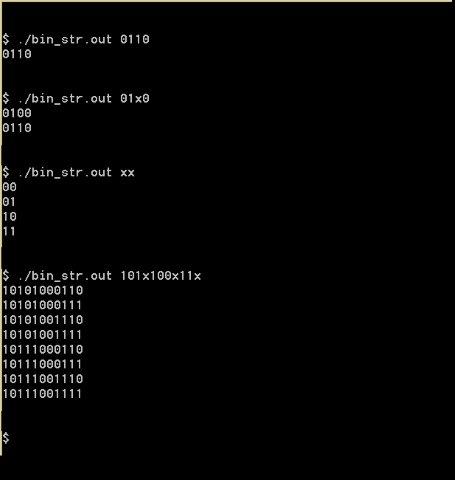Fibonacci Series Using Recursion in C
1. (10 minutes) Write a program called fib.c that calculates the nth fibanocci number. The equation for the Fibonacci numbers is defined as follows:
1. Fib(0)=0
Fib(1)=1
Fib(N )=Fib(N−1)+Fib(N−2)
2. Name your executable fib.out
3. Your program should accept N as a command line argument
4. You MUST solve this program RECURSIVELY
5. Unlike the example in class, you may only have ONE RECURSIVE CALL in your function
1. Hint pointers help make this possible.
6. Here are the first 100 numbers in the Fibonacci sequence
7. Examples
1../fib.out 0
The 0th fibanocci number is 0.
2../fib.out 1
The 1th fibanocci number is 1.
3../fib.out 10
The 10th fibanocci number is 55.
2. (5 minutes) Write a program called bin_str.c that completes a binary number. A binary number is made up of 0’s and 1’s but the input strings you will receive can also contain ‘x”s. An x represents a digit that can be either a 0 or a 1. Your program should display all the possible binary digits that can be formed. For example the string x1x0 could represent either 0100, 0110, 1100, or 1110.
1. Name your executable bin_str.out
2. Your program should accept the binary string as a command line argument
3. You MUST solve this program RECURISIVELY
4. Examples
1../bin_str.out 0110
0110
2../bin_str.out 01×0
0100
0110
3../bin_str.out xx
00
01
10
11
4../bin_str.out 101x100x11x
10101000110
10101000111
10101001110
10101001111
10111000110
10111000111
10111001110
10111001111
- File Format: .c

